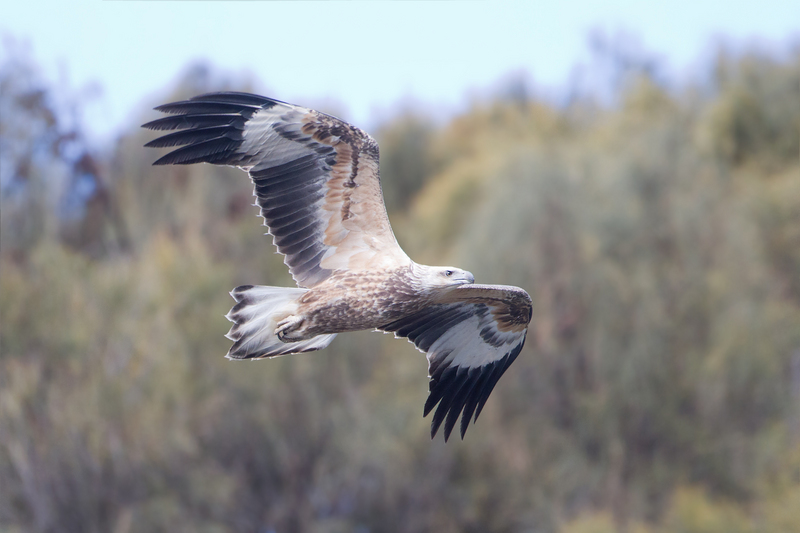|
| Query: birds of australia | Result: 561st of 1059 | |
white-bellied sea eagle (Haliaeetus leucogaster)
| Subject: | white-bellied sea eagle (Haliaeetus leucogaster)
| | Poster: | Wiki Photos (---@---.---)
| |

| Resolution: 2200x1467
File Size: 874429 Bytes
Date: 2012:03:11 11:43:28
Camera: Canon EOS 7D (Canon)
F number: f/4.0
Exposure: 1/2000 sec
Focal Length: 500/1
Upload Date: 2017:08:27 02:39:02
|
White-bellied Sea Eagle (Haliaeetus leucogaster), Derwent River Estuary, Tasmania, Australia
Date 11 March 2012, 11:43:28
Source Own work
Author JJ Harrison (jjharrison89@facebook.com) https://commons.wikimedia.org/wiki/User:JJ_Harrison
Source: https://commons.wikimedia.org/wiki/File:Haliaeetus_leucogaster_First_Year_Juvenile_-_Derwent_River_Estuary.jpg
The white-bellied sea eagle or white-breasted sea eagle (Haliaeetus leucogaster) is a large diurnal bird of prey in the family Accipitridae. A distinctive bird, the adult white-bellied sea eagle has a white head, breast, under-wing coverts and tail. Haliaeetus leucogaster is found from India, Bangladesh, and Sri Lanka in southern Asia, through all of coastal Southeast Asia and southern China, eastwards through New Guinea and the Bismarck Archipelago, and Australia.
|
Comments |
|---|
| | Guest |
|
Scientific Name: Haliaeetus leucogaster (Gmelin, 1788)
Common Names: White-bellied Sea-eagle, White-bellied Fish-Eagle, White-breasted Sea Eagle
French: Pygargue blagre; German: Weißbauch-Seeadler; Spanish: Pigargo oriental
Taxonomy: Falco leucogaster J. F. Gmelin, 1788, no locality = Java. |

|

|

|
birds of australia
561/1059 |

|

|
^o^
Animal Pictures Archive for smart phones
^o^
|
|
|

